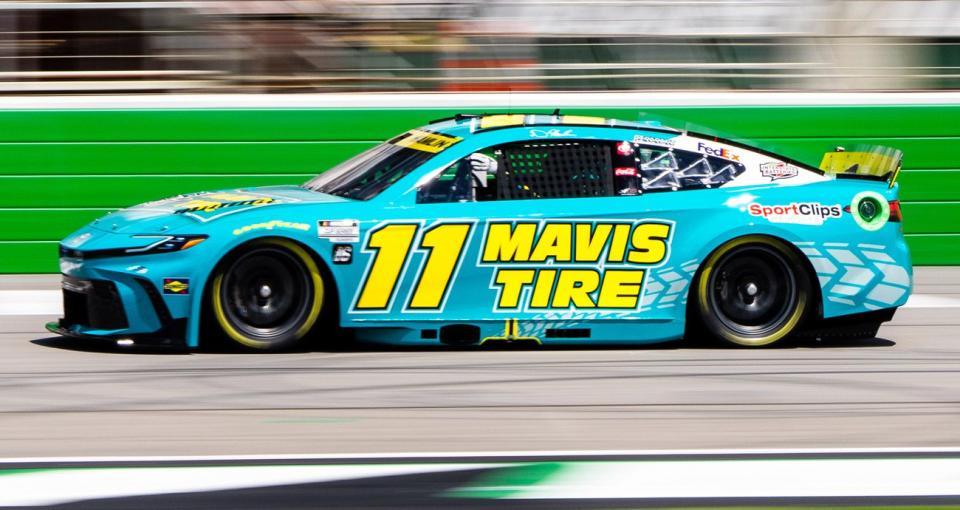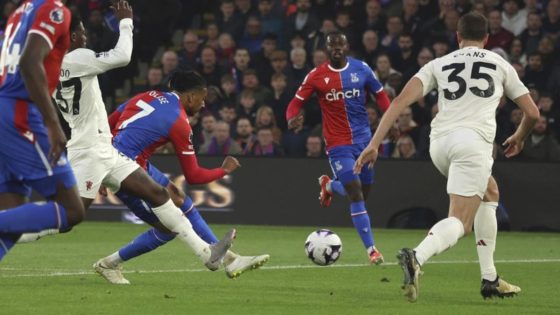As Joey Logano and Denny Hamlin demonstrated Sunday at Atlanta Motor Speedway, superspeedway success sometimes can hinge on an agonizing choice between being daringly great or intentionally mediocre.
Logano presciently outlined that dichotomy four days before winning the playoff opener.
Asked who was the best driver in NASCAR‘s premier series on the drafting tracks of Daytona, Talladega and Atlanta (where it‘s necessary to race inches from other cars and often ram them at speeds approaching 200 mph), he essentially threw up his hands.
“With superspeedway racing in general now, it’s hard to point out the best,” Logano said on Cup Series Playoff Media Day. “The best superspeedway racers wreck every single time. I‘m one of the best, (as are) Brad (Keselowski) and Denny, and more times than not, we end up on the hook because the wrecks start at the front, and we’re there. It’s really confusing right now.”
MORE: Logano lunges to Round of 12 with win | Best Atlanta photos
Perplexing might be the best way to explain Hamlin’s performance at Atlanta.
The three-time Daytona 500 winner hung back in the 38-car field and bided his time waiting for the massive playoff-altering wreck that never came.
He started at the rear with teammates Martin Truex Jr. and Ty Gibbs because of unapproved adjustments, but only Hamlin willingly stayed there while many around him slammed the accelerator and disappeared into the fray ahead.
Gibbs earned points in both stages and was leading with 10 laps remaining. Ryan Blaney restarted 32nd in a damaged car with less than 50 laps remaining and still surged to finish third while pushing Penske teammate Logano to the victory.
RELATED: Analysis: Penske perfection shines at Atlanta
Hamlin, whose average running position was 30.8, chose discretion as the better part of valor over 400-plus miles and eventually paid the price.
“Tried to avoid wrecks all day and just got in the last one,” Hamlin said. “At the very end we got the (car) kind of where it needed to be, but by then, you were kind of dealing with a logjam, and you couldn’t go much of anywhere, so I just tried to avoid the wrecks.
“I was trying to get 20 points out of the day. That was my goal, just get 20 however we could.”
His final tally was 13 points after a pileup on the final lap negated the positions he needed to attain a very modest objective — 20 points is a third of the maximum for a race winner who sweeps the stages.
Hamlin eschewed going for stage points Sunday — perhaps mindful of a 14-point effort despite leading 15 laps in his previous trip to Atlanta.
In that Feb. 25 race, he crashed twice while running in the top 10 near the end of both stages. In Stage 2, Hamlin got caught in a wreck that started when Logano was tapped into the wall while desperately trying to stay in fourth.
That was one of three superspeedway crashes this year for Logano, who aptly described after winning Sunday why it can be so maddening.
“Superspeedway racing is a lot of fun until it’s not,” he said. “It’s actually really entertaining, even from inside the car. The chess match that it is, trying to outsmart your competitors. It’s really fun until you just wreck. Then you’re like, ‘Man, this sucks.’ There’s no better way of saying it. It’s just great until it’s not.”

Having combined for nine career wins at Daytona and Talladega, Logano and Hamlin arguably are the two best superspeedway drivers in NASCAR.
But by points scored, they were ranked the two worst playoff drivers on drafting tracks in the 2024 regular season.
Logano compiled 71 points in four races (Atlanta in March, Talladega in April and Daytona in February and August), which was 25th overall in the Cup Series per Racing Insights.
Hamlin was much worse in those four races, amassing 46 points and slotting in 32nd overall.
A future NASCAR Hall of Famer who once made all the right moves in the draft (witness his last-lap passes for Daytona 500 wins in 2016 and ‘20) suddenly could do nothing right during an eternally snake-bitten season on superspeedways.
So his team elected the time-honored superspeedway strategy of sandbagging. Despite a few stray protestations on his team radio, Hamlin was fully committed and matter-of-factly endorsed it afterward.
“I did what I wanted to do, and that was lay in the back most of the race and try to see what attrition came about,” he said.
Even though it requires less effort, there‘s hardly shame in sitting back at superspeedways. Drivers have won at Daytona and Talladega after long stretches of riding, and it‘s a long-accepted way of doing business at Joe Gibbs Racing. The team has employed the strategy for more than 20 years, dating to when Tony Stewart and Bobby Labonte often formed a half-throttle tandem at Daytona and Talladega.
In 2016, Hamlin and teammates Matt Kenseth and Carl Edwards remained in the back for 500 miles at Talladega. The trio finished 28th to 30th and advanced to the next round despite cries of whether they had complied with the “100 percent rule.” (NASCAR executives confirmed the tactics were legal.)
Championship implications were the narrative again at Atlanta — but the conversation has shifted to whether this move could mean an early playoff exit for Hamlin. He is just two points above the elimination line after losing eight points from his cushion to start the playoffs in pursuit of an elusive first title.
RELATED: Full Playoffs standings after Atlanta
The decision by Hamlin and crew chief Chris Gabehart to stay in the back felt like the antithesis of a fateful call in the 2019 season finale at Homestead-Miami Speedway. The team applied a massive piece of tape to the front grille of Hamlin’s car in hopes of catching eventual champion Kyle Busch but instead caused overheating that forced an unscheduled pit stop and wiped away a shot at the win.
In both instances — by accident at Homestead, deliberately at Atlanta — the No. 11 team took the ball from the hands of its superstar.
Now it’ll be on Hamlin’s shoulders to keep his championship bid alive at Watkins Glen International and Bristol Motor Speedway.
Nate Ryan has written about NASCAR since 1996 while working at the San Bernardino Sun, Richmond Times-Dispatch, USA TODAY and for the past 10 years at NBC Sports Digital. He is the host of the NASCAR on NBC Podcast and also has covered various other motorsports, including the IndyCar and IMSA series.
Source Agencies



